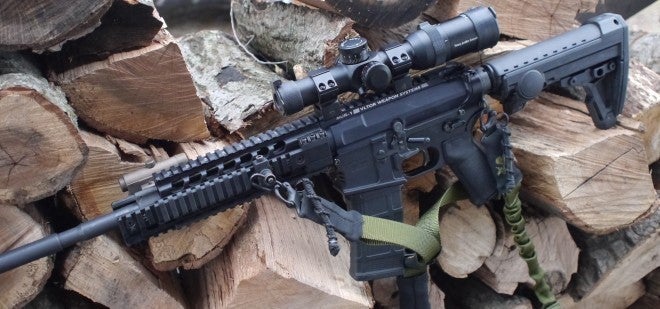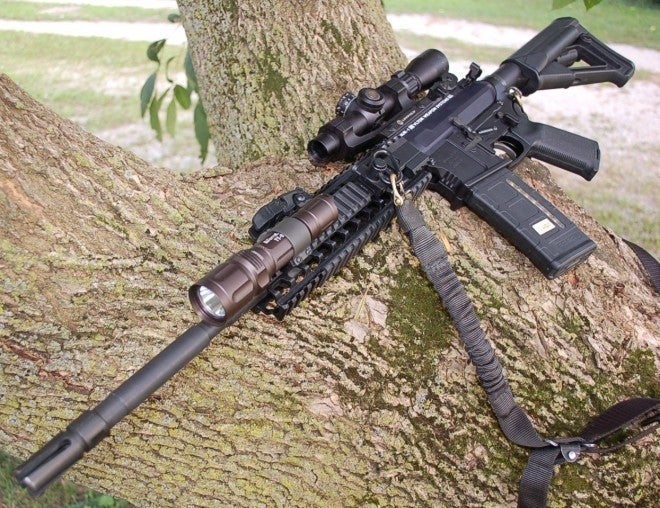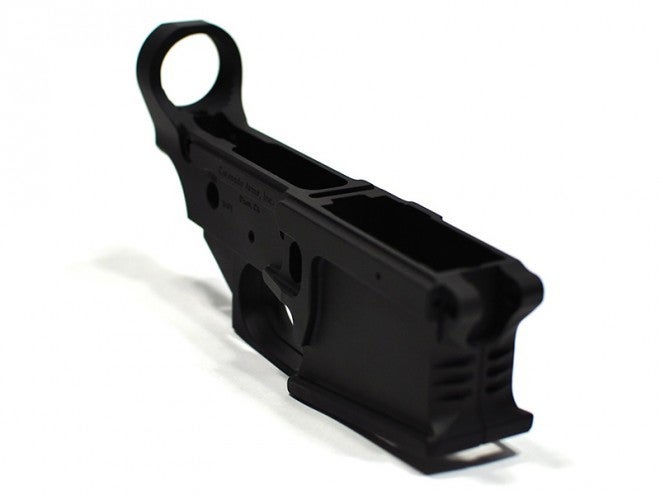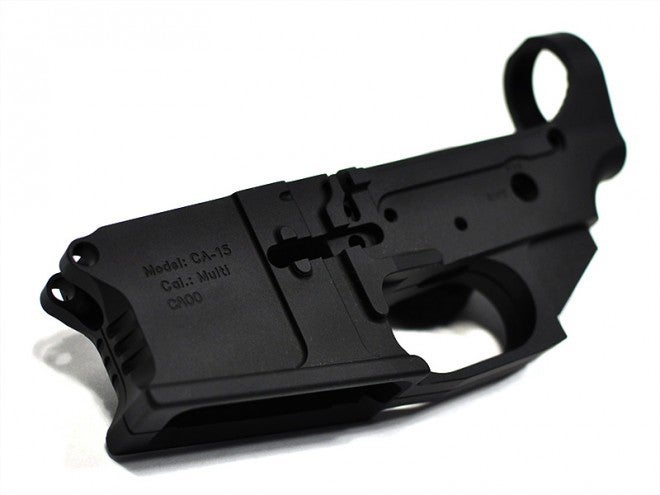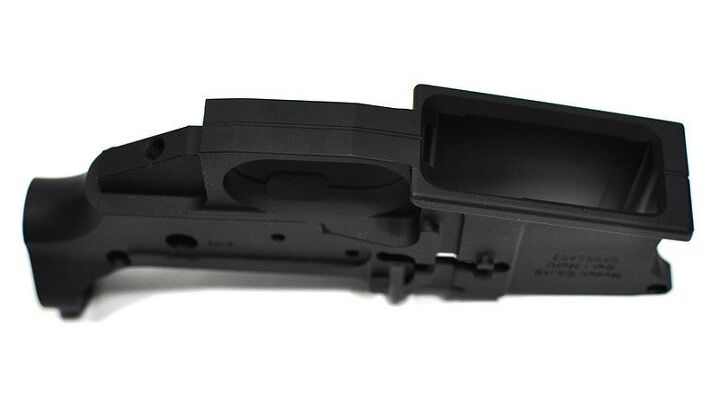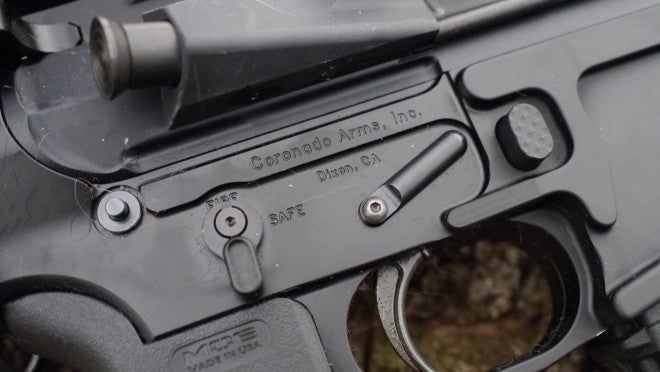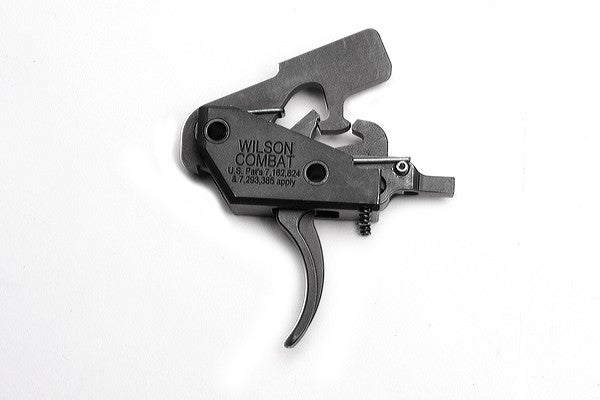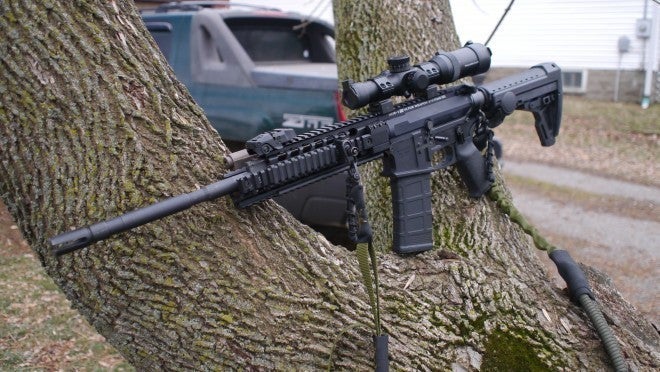When I first started shooting AR’s I was more than satisfied to buy one off the shelf. In the last few years I was leaning more and more toward building my own. What I really wanted was an AR that I built using parts I thought to be some of the best on the market. I also wanted the satisfaction of building it with my own hands and the feeling of accomplishment that goes with it.
Many shooters I’ve spoken with about this subject have been leery about taking a project like this on. I can understand that but if there was ever a rifle that begged to be built by a shooter it’s the AR-15. You can look at an AR much like a large lego set. If the parts are manufactured of quality materials with the proper tolerances, as they should be, it’s just not terribly difficult. Of course before you take on the task of building an AR you need to do your homework.
If you have a friend who has built several AR’s they can help you get started and ensure you avoid some of the common mistakes first time builders encounter. Another source of knowledge can be found in some videos that feature well known gunsmiths. You can watch them through then go back and reference the parts you’re working on. AGI (American Gunsmithing Institute) has an especially good selection of videos on building an AR as well as other relevant topics concerning the AR.
Before beginning the build you need to research the materials and tools you’ll need to do a good job and not struggle in performing a task with inappropriate hand tools. This information can also be found in these AGI videos. Some of the tools needed you probably already have while the others can be purchased for right at $100 depending on brand and where you purchase them.. I’ve always relied on Brownells for any gunsmithing tools I’ve needed. Their staff is knowledgeable and the prices are reasonable.
After you’ve done your research and have the tools you’ll need on hand it’s time to start thinking about the parts you want to use to build your ideal AR. You may have some idea already of the brands and models you prefer. For the remainder talk with those people with experience in building an AR. You can also glean information from those same videos you’ll be using as a reference in building your rifle.
Like everyone else I have my preferences in brands and models of uppers, lower receivers, barrels and the other major components. There are a good number of quality parts manufacturers out there so if you choose other brands that’s fine. The point is to build using the parts you like and feel are high quality. One bit of advice is to purchase quality not just what’s inexpensive that you feel you can get by with. You’ll end up spending more replacing these inferior components than you will buying quality to begin with.
In this build I purchased my lower receiver from Coronado Arms. You may not have heard of Coronado as far as AR’s are concerned but they make a very fine line of custom bolt action rifles and have for some time. All guns and parts are designed and made in house. The owner, Curt Chastain designs all the firearms the company makes. Coronado started out in the black rifle business by introducing the receiver I used on this rifle. They also sell their own brand of AR rifles.
The Coronado CA15 lower is machined from a billet of 7075 T-6 aluminum with a hard coat anodized finish. The magwell is broach cut with very precise lines. Everything about this lower shows extreme precision and quality which was confirmed not only by measurement but how perfectly it mated to the upper receiver. I’ve never seen another lower that was as precisely manufactured as this one. That and well it’s just a very handsome lower. All of the internal parts from the trigger group to the pins holding it in place were snug with no play. Still it’s very easy to separate the upper and lower without having to use a punch.
One thing you’ll notice in the photos is how closely the upper and lower receiver fit. There is a very fine line between the two which is uniform all the way around. There is no rattle or play between upper and lower. All the magazines I’ve used have no play yet eject easily. The magwell is also beveled making magazine handling easier. I highly recommend this lower for a build or replacement.I’ve honestly seen none better.
The next part I chose was the upper receiver. I chose the VLTOR MUR-1 with the forward assist. When I purchased it the shortage was still on and the model with the forward assist was all that was available. The reason I bring this up is the doubt I have that a forward assist is even needed. I can’t remember the last time I used it.
As I mentioned the fit with the Coronado lower is about as perfect as you can ask for. The VLTOR upper has a thicker wall than most, which is a good thing. When you have a good upper and lower fit along with the thicker walls on the MUR you have a stiffer rifle with greater accuracy potential when mated with a good barrel.
Additional Parts
For a charging handle I bought a Bravo Company medium “Gunfighter” model. Along with the charging handle I used a BCM bolt carrier group (BCG) as well as a BCM bolt. I’ve been switching between an ERGO stock and a Magpul STR. The current rail system is also from ERGO in the two-piece configuration. I’ve also been using a Parallax Tactical Gen2 13″ slim rail. One good thing about this rail system is it uses any Magpul add on rails or any other Magpul rail accessory. The trigger group is a two stage Wilson match tactical.
The barrel is of course one if not the most important part in your rifle. I’ve chosen a Bravo Company 16” M4 SOCOM. This barrel has a 1/7 twist, which works well with heavy or lighter bullets. This barrel has a chrome chamber and bore with a manganese finish. It’s also MPI and HPT tested. With a price of $269 it’s a lot of barrel for the money.
There are other parts, which have nothing to do with the overall quality or function of the rifle. They are rather a matter of personal choice. Optics as well as the pistol grip and iron sights fall into this category.
As I mentioned earlier there are many choices out there in a market flooded with all of these parts. I feel these I’ve chosen are among the very best. My advice is take your time. Talk with other AR enthusiast as well as doing your own research. Finally enjoy what you’ve accomplished in building your rifle and practice often. I can promise you’ll build more than one rifle once you complete the first.
One thing I realized I left out was the sling in Ranger green. These slings are handmade by US Veterans. The quality is fantastic. Each vet signs their name to each sling. Each sling comes with a certificate signed by the veteran who made it. Cost is $120 but well worth it considering the quality and the fact it supports these fine men.
 Your Privacy Choices
Your Privacy Choices
